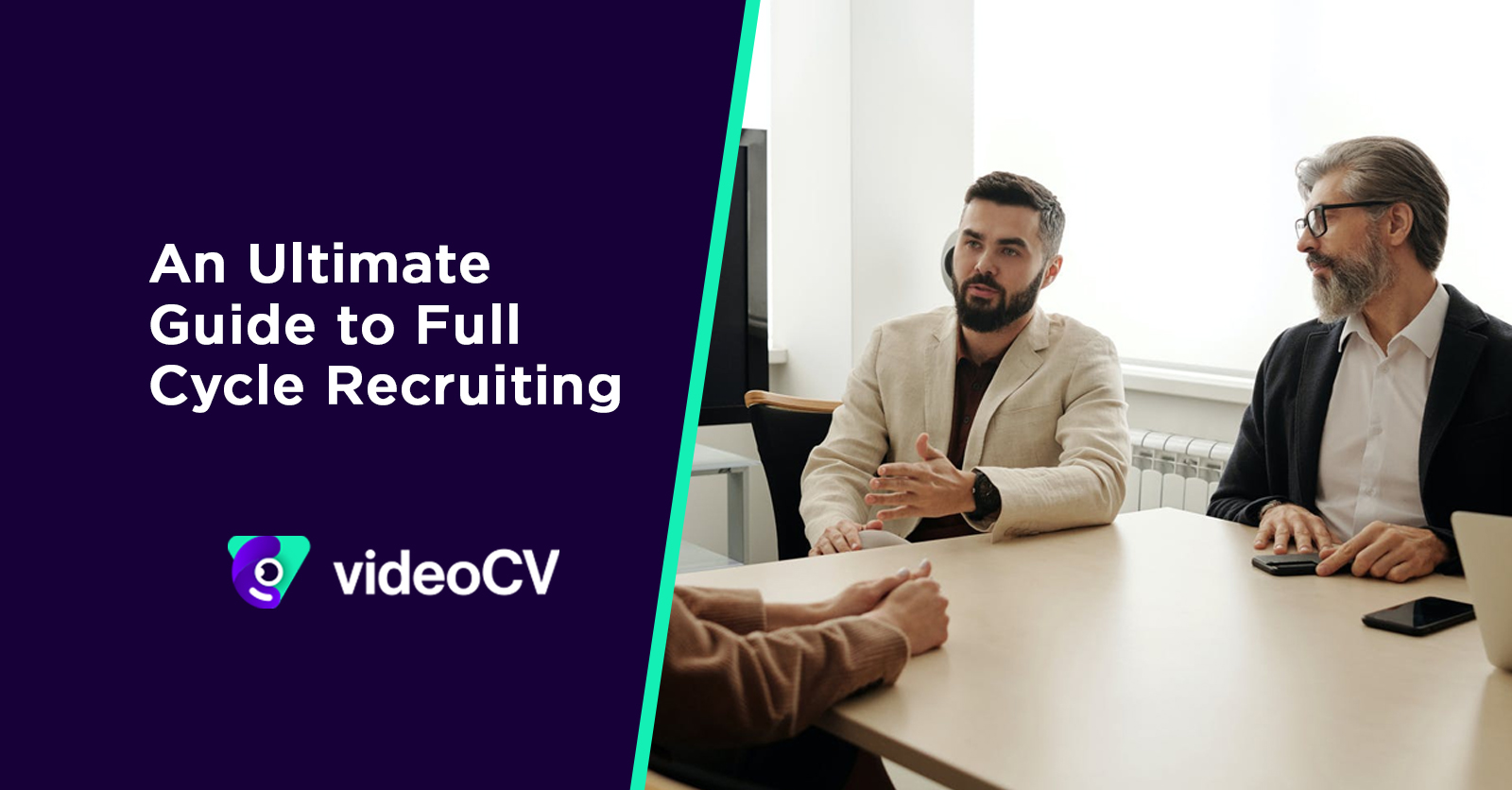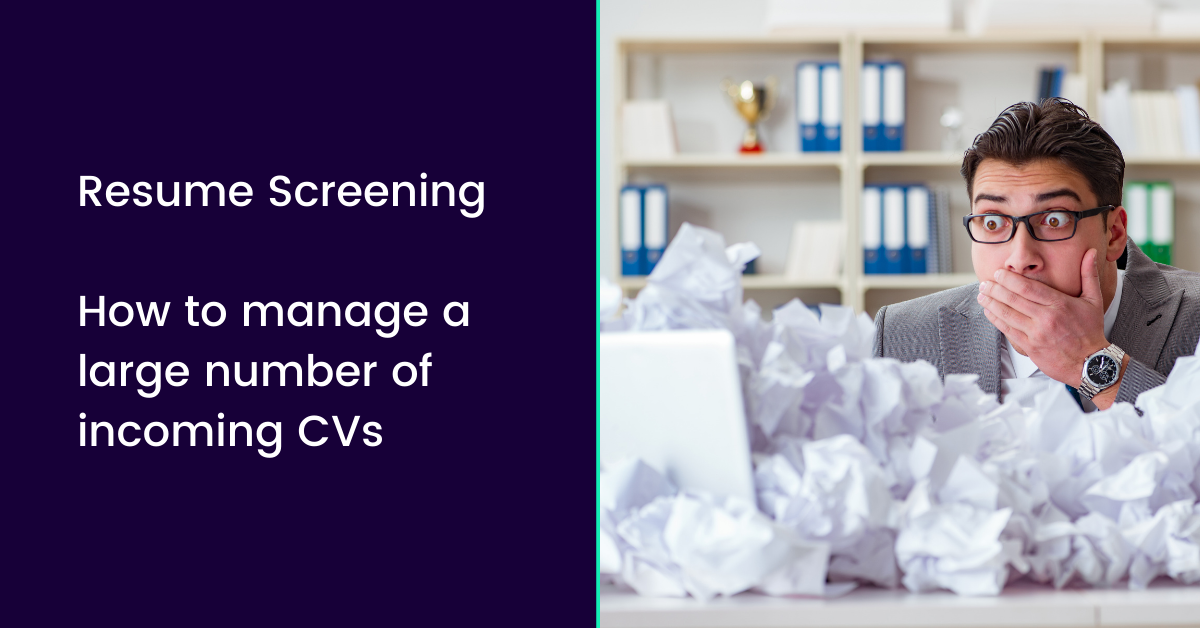An Ultimate Guide To Full-Cycle Recruiting
With a strategic approach to talent recruitment, you get the talent you want and need.
The right full cycle recruiting strategy works to bring the right people on board for your business by matching culture, skills, and leadership potential.
What is the End to End Recruitment Process and why is Recruitment Life Cycle Management so Important?
Businesses of all sizes are feeling the pinch of a tough economic climate, and the cost of replacing lost employees can add up fast.
Many businesses are subject to a high turnover rate, leaving them unable to retain many of their employees. Sure, the job market is tight, but employees who quit may be able to find better paying jobs easier than before and are thus not finding it worth keeping a lower paying job.
The goal of any business owner is to retain their best and brightest and not lose them to other companies. Business owners are responsible for evaluating their employees. It’s extremely important to have an idea of how your employees feel in your office, because their well-being contributes to everyone else’s happiness.
A well-structured recruiting process helps you gain a good understanding of your hiring needs and identifies the steps you need to take in order to find the best people for your organization. Check out our full cycle recruiting process to see how we can help you fill your open roles with top talent.
What Is Full Cycle Recruiting?
Recruiting is a tough, challenging process. If you run your recruiting department well, however, you’ll hire the right people and avoid the trouble associated with hiring the wrong people.
Full cycle recruiting begins at the planning stage with the HR department, and runs the course right through until the selected candidate or candidates are onboarded with the company.
Recruiting begins by outlining your staffing needs. Matching those needs to the qualifications of available candidates is next. Then comes the policy of hiring the right people for all positions within your company. That means evaluating resumés, conducting interviews, administering necessary tests, and more before making a final decision. And of course, what’s the point of all this if you don’t hire top talent? You must determine who best fits into your workplace culture. After you've decided on a new hire, the hiring process is not over; it's time to make sure that your new recruit can do what you need him or her to do.
One person is usually responsible for recruiting new employees for a small business. Below is a description of the different steps in this process and helpful tips around how to have better results.
Full cycle recruiting is the term given when one person or one agency manages the entire recruitment process, from the HR planning phase right through to onboarding. These are the other names that are also referred to as “full cycle recruitment”:
- full life cycle recruiting
- 360 recruiting
- End to end recruitment
Sure, your gut feeling can tell you a fair amount about a person. But if it is all you are relying on when sourcing and onboarding new talent, you are putting your company at risk.
Relying on intuition and experience to hire the best talent is no match for using data and analytics.
What is the full cycle recruiting process?
The full cycle recruitment process consists of several stages to find the ideal candidate. It covers the entirety of the hiring process, from start to finish, from the planning phase in the offices of the HR department right through the recruitment cycle to the job offer, hiring and onboarding of the successful candidates.
Full-cycle recruiters are engaged in a diverse set of tasks that involves collaborating with hiring managers, offering candidates, interviewing candidates, and selecting the best candidates for open positions. As such, it is their duty to keep tabs on the entire recruitment process, from reaching out to hiring managers to collaborating with them to screening candidates.
A recruitment process that delivers the best new talent is an invaluable asset for any company. The way it operates can have a significant influence on cost of labor, turnover, productivity, innovation, and the learning environment. More importantly, though, it can ultimately impact how well you grow your business. While the steps of a full cycle recruiting plan may vary from one organization to another, they always include sourcing tactics, screening methods, offer management techniques, evaluation decisions and achievements. In an ever changing world, it remains a core skill to identify and hire top talent.
The Hiring Process is the most important aspect of talent acquisition and staffing. Every organization has its own avenue they use to attract new talent. It could be social media, it could be job boards, or a database of employee referrals. Each one has its pros and cons, and the right talent sourcing strategy varies greatly among organizations, based upon their business model and desired employees. Full life cycle recruiting gives organizations the power to tap into Human Resources and find the best talent for their company.
What is the full cycle recruiting process?
The following 6 stages make up a typical full cycle recruitment process:
- Identify Ideal Persona
- Sourcing and Recruiting
- Candidate Screening
- Interview and Selection
- Making an Offer and Hiring
- Onboarding
Identifying Ideal Persona
What are the expectations of the person that will fill the open position? Take a look at the job description, is it accurate? Does it attract the ideal candidate?
Ask the hiring manager for detailed information about the open position. Work with them to build an ideal candidate profile containing all of these details. This will often take place in the form of an intake meeting.
Once you have all the information about the ideal candidate, create an ideal candidate persona that includes everything you’ve learned from the intake meeting. During the intake meeting, you can talk to the hiring manager about what they’re looking for in a potential candidate. You will also have an opportunity to set expectations on how things will go next. You can establish a strategy for sourcing and the right type of person to fill the position. Ask the hiring manager to give examples of past candidates who would be a good fit.
It is also a good idea to prepare a staffing plan with the hiring manager. The staffing plan outlines exactly how many positions are open, what skills/experience/education are required, the estimated time period the role will be open, and any restrictions on minimum/maximum salary range. Walk through each step of your staffing process (e.g., posting to ATS, follow up emails, scheduling interviews) with the hiring manager, and make sure they understand the entire process. As they weigh in on this process, you’ll learn more about their ideal candidates for each position.
Sourcing & Recruiting
Once you understand your ideal candidate, it becomes much easier to source them.
Recruiting is the act of attracting, selecting and hiring people into your company. It’s more than just advertising for job openings on the internet. It’s about networking with people to fill job openings internally or externally, depending on your needs.
If you have a clear idea of what you need, you’ll want to regularly check on the job board pages. Often the best candidates are self-employed or freelancers so you’ll also want to regularly check websites such as Elance and TopTal for potential candidates. These are known as passive candidates and they make up a staggering 70% of the global workforce. While active candidates have been looking for a new role, passive candidates have been getting on with their work and haven’t been applying to jobs.
Passive candidates are typically lower down in the organization and tend to be more qualified and experienced than those actively searching for a position. It’s important that you source this group as well as the active ones.
It is a good investment to operationalize your recruitment process. Use a platform like VideoCV that lets you source top talent through video interview software, access them on demand, and find the right person every time.
Candidate Screening
An applicant tracking system or a specially designed candidate screening tool like VideoCV makes this part of the process easier and more efficient than ever. The idea of the applicant tracking system is that you will use an online service to scan all applicants for your vacant position. This will allow you to quickly shortlist suitable candidates using various filters and keywords specific to the role. Another positive of this system is that your HR department can quickly keep track of all applicants so you can anticipate any problems in the future if there are delays or the removal of applicants.
The most suitable candidates can then move onto the next phase. When using an intelligent platform like VideoCV, this phase could be the video response phase. This is where candidates can upload their video responses to questions asked, and can help to whittle down the number of candidates even more. The biggest benefit of this is that the hiring team has access to a large number of candidates and gets an in-depth glimpse into their experience, skills and personality without having to spend the resources on an in-person interview.
An efficient candidate screening process is the single most effective way to shorten the hiring time while still ensuring you are getting access to the most eligible candidates.
Interview and Selection
Once you've narrowed your choices, you're ready to meet the contenders.
You are about to get valuable information that you wouldn't have received otherwise, so tie your list down to four or five candidates instead of ten (or twenty). The more informed you are in advance, the better you'll be able to ask the right questions in an interview. The previous step, and using a candidate screening software, helps you to achieve this.
Prioritize the short list by first eliminating those that are great but not executives. Then, take into consideration what you’ve already discovered about each of the remaining candidates, including what you read in their resume, thought during the submitted video responses, and any further research you’ve done. What questions do you still have, and what can you find out to fill in the blanks?
The background and reference checks also need to be included in this step. It is your opportunity to conduct a comprehensive investigation of the candidate’s qualifications across all critical dimensions. Use this step to validate that you have indeed found the best candidate for your organization. The goal of this step is to extend a job offer, but only if the candidate is a good fit for both parties involved.
Making an Offer and Hiring
The recruiter will let the candidate know that they are being considered for the job, and typically extend an offer. This officially kicks off the hiring process and it is essential that this is as smooth a transition as can be- it is the first step in the new employee’s journey with the company. A positive and productive hiring process can set the stage for a strong working relationship with your new employee
Ensuring that all candidates have a high-quality experience from the moment they apply until they join your team greatly improves their perception of your company. The more positive their experience, the more likely they are to refer friends and colleagues to your company.
Onboarding
Did you know that 88% of newly hired employees feel their company did a bad job of onboarding them?
That’s a terrible statistic, and not one your company should strive to add to. A successful onboarding process sets a positive tone for ongoing employee relations and sets an employee up to succeed. Enabling seamless adoption of new tools, processes, and technology is critical to employee satisfaction and productivity. It requires an approach that focuses on an employee' s needs first, both during onboarding sessions and after they've completed onboarding.
The Bottom Line
Whether you call it 360 recruiting, full cycle recruiting, or end to end recruitment, there is one thing that is clear: it is a pivotal part of recruiting and finding the right candidate to join a company. From the job posting to the reference check, throughout all recruiting cycle stages-- your company needs to ensure that the candidate experience remains positive.
Need to level up your hiring processes? Book a demo today and we'll discuss how we can help you out achieve the best hiring experience.





